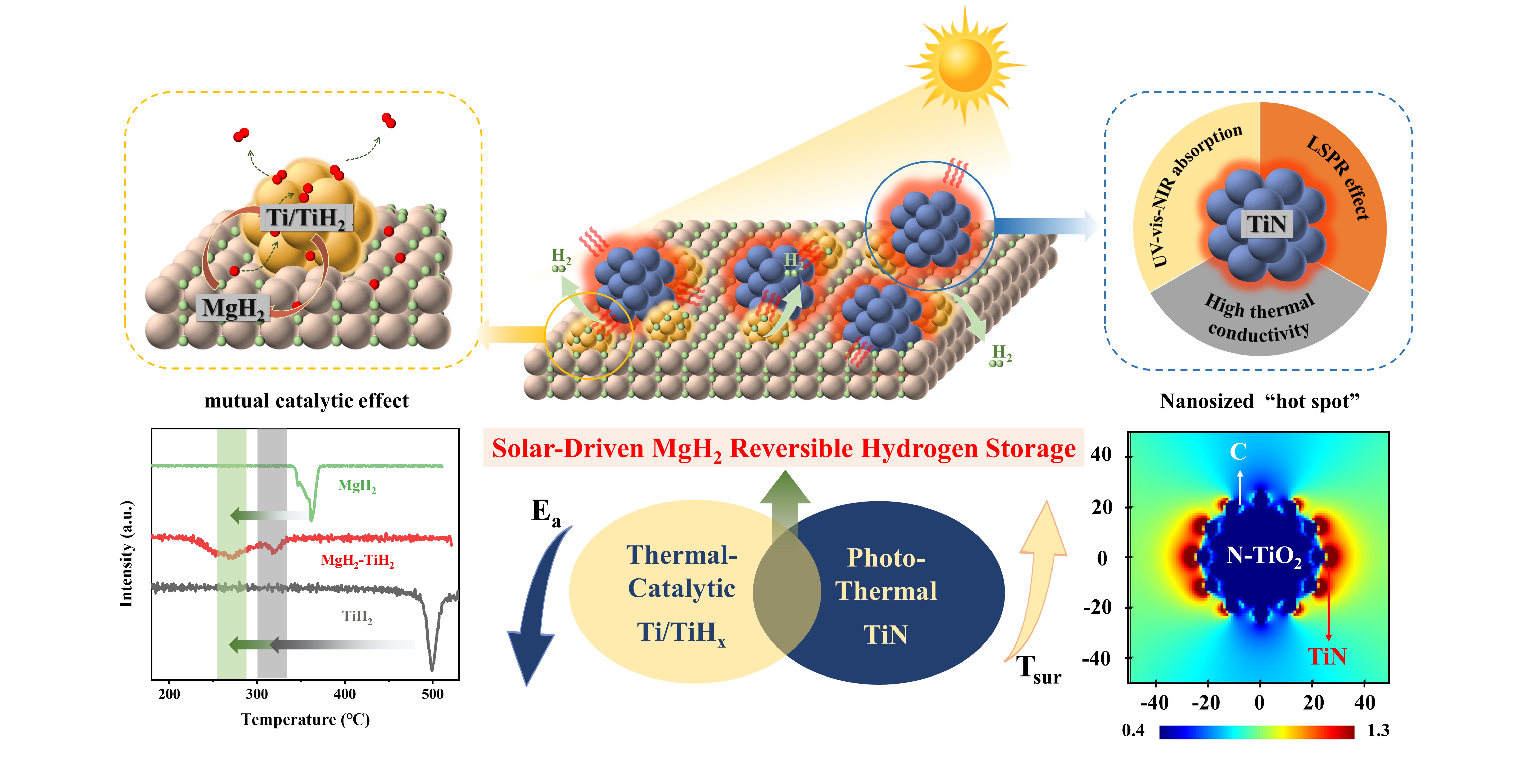In Situ Construction of Interface with Photothermal and Mutual Catalytic Effect for Efficient Solar-Driven Reversible Hydrogen Storage of MgH2.
Xuechun Hu, Xiaowei Chen, Xiaoyue Zhang, Yang Meng, Guanglin Xia*, Xuebin Yu*, Dalin Sun, Fang Fang*.
Adv. Sci., 2024, 2400274. (![]() PDF File.pdf)
PDF File.pdf)

Abstract: Hydrogen storage in MgH2 is an ideal solution for realizing the safe storage of hydrogen. High operating temperature, however, is required for hydrogen storage of MgH2 induced by high thermodynamic stability and kinetic barrier. Herein, flower-like microspheres uniformly constructed by N-doped TiO2 nanosheets coated with TiN nanoparticles are fabricated to integrate the light absorber and thermo-chemical catalysts at a nanometer scale for driving hydrogen storage of MgH2 using solar energy. N-doped TiO2 is in situ transformed into TiNxOy and Ti/TiH2 uniformly distributed inside of TiN matrix during cycling, in which TiN and Ti/TiHx pairs serve as light absorbers that exhibit strong localized surface plasmon resonance effect with full-spectrum light absorbance capability. On the other hand, it is theoretically and experimentally demonstrated that the intimate interface between TiH2 and MgH2 can not only thermodynamically and kinetically promote H2 desorption from MgH2 but also simultaneously weaken Ti─H bonds and hence in turn improve H2 desorption from the combination of weakened Ti─H and Ti─H bonds. The uniform integration of photothermal and catalytic effect leads to the direct action of localized heat generated from TiN on initiating the catalytic effect in realizing hydrogen storage of MgH2 with a capacity of 6.1 wt.% under 27 sun.
